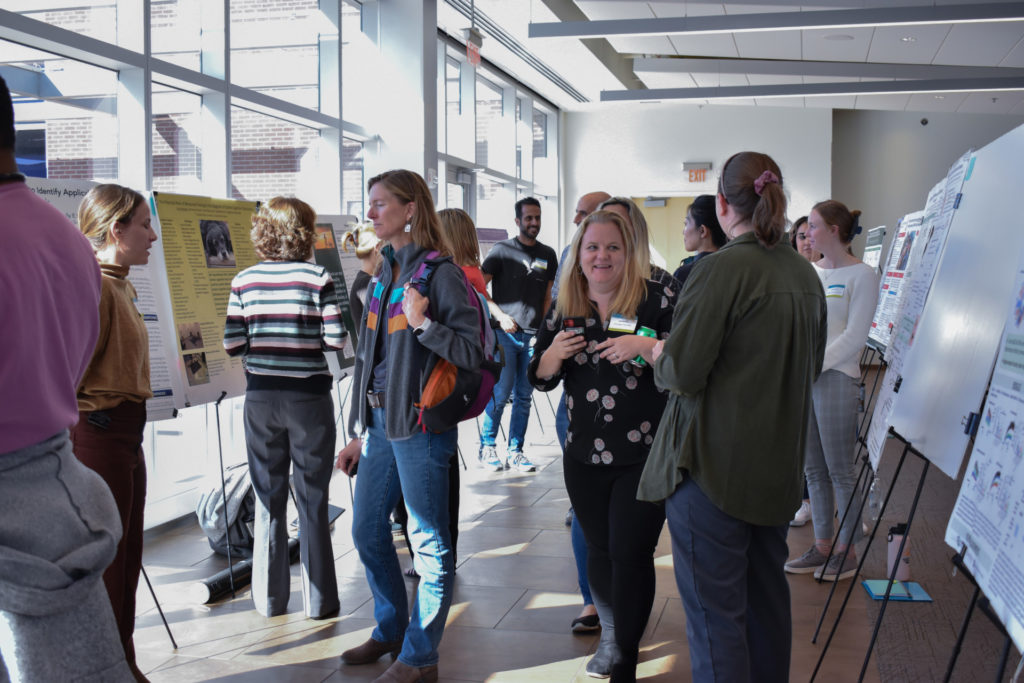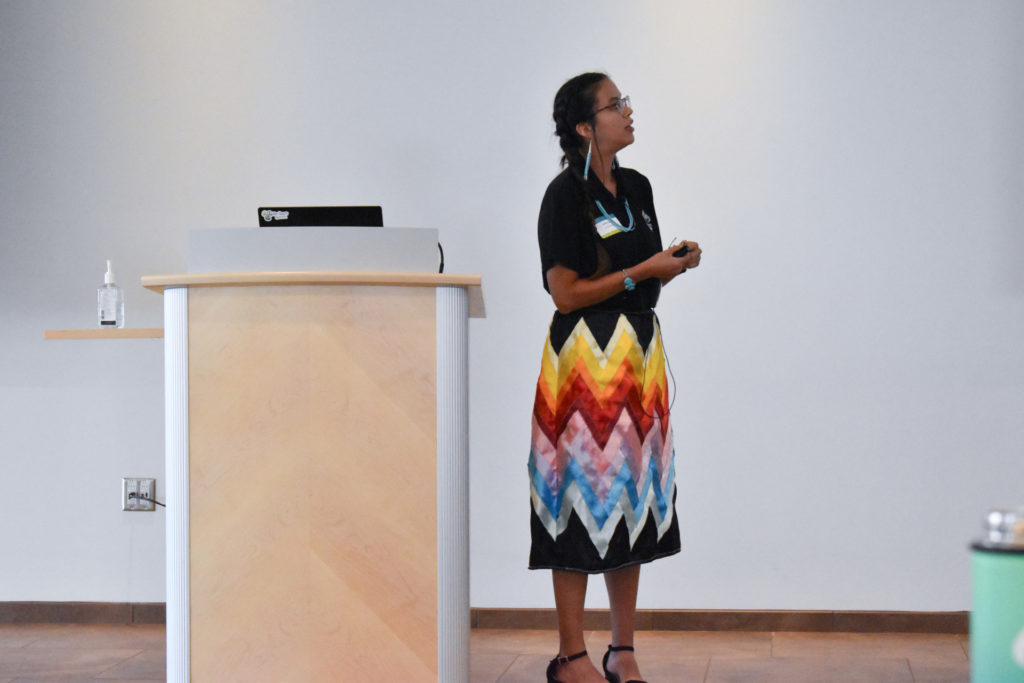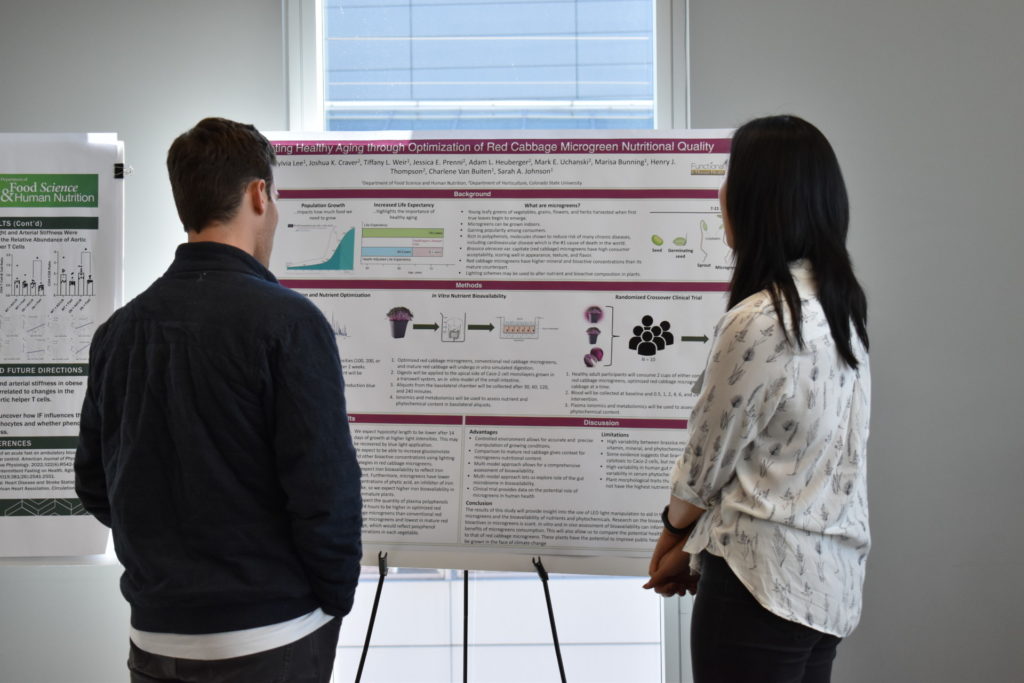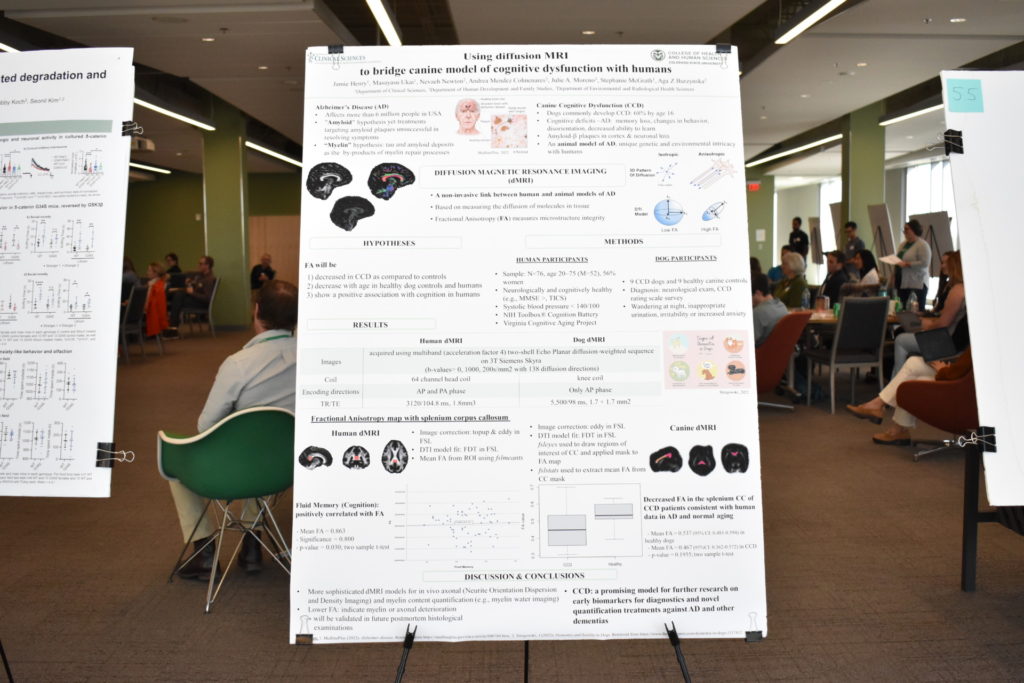
Worms, mice, guinea pigs, horses and dogs are just some of the models that translational scientists use to study various health conditions. Translational science encompasses multiple disciplines but at its heart aims to understand how different interventions and technologies can support the health and well-being of both humans and animals.
On Oct. 12, the windows of CSU’s Translational Medicine Institute Event Hall were decorated with carefully crafted poster boards showcasing translational researchers across CSU’s most recent studies.
The One Health Institute and Center for Healthy Aging hosted the Human-Animal Translational Science Research Symposium, offering translational scientists across campus the opportunity to gather, share their findings and learn from one another.
Oral presentations
The event kicked off with keynote speakers Julie Moreno (Environmental and Radiological Health Sciences) and Stephanie McGrath (Clinical Sciences). Their lecture, “Wiggly Worms and Furry Friends: The Search for Healthy Aging,” focused on the ways that animal models can support healthy aging and included a presentation on McGrath and Moreno’s ongoing study on canine cognitive dysfunction, or doggie dementia.
Following the keynote presentation, student researchers selected by the OHI and CHA leadership teams discussed their studies via oral presentations. For example, Nizhoni Hatch, a student in the Department of Microbiology, Immunology, and Pathology under Research Advisor Gilbert John, presented, “A One Health Approach to the Effects of Legacy Uranium Mining on the Navajo Nation.”

Uranium mines operating from 1940-1970 in Sweetwater, Arizona left detrimental effects on the soil, livestock, drinking water, and general health of the Navajo community in the area. Hatch’s independent research aims to provide the Navajo nation with resources to reduce the rate of cancers, depression, and other health conditions in Sweetwater and increase family ranching and farming activities.
Poster session
After oral presentations, the symposium shifted to a poster session where student and postdoctoral researchers shared their findings with others. As symposium attendees walked around, the room filled with scientific chatter on all things translational research.
Researchers represented 11 departments across five of CSU’s colleges. Among them, Sylvia Lee, a doctoral student in the Department of Food Science and Human Nutrition, presented, “Promoting Healthy Aging through Optimization of Red Cabbage Microgreen Nutritional Quality,” representing the Functional Foods and Human Health Laboratory.
Lee’s study focused on three factors: What conditions produced the highest nutrient yield in red cabbage microgreens, how those microgreens digest in the body, and how they compare to conventionally grown microgreens and mature red cabbage? Her research provides a healthy, inexpensive, environmentally friendly crop that supports human health and well-being.

Jamie Henry, a research assistant in the Department of Clinical Sciences, presented the poster, “Using diffusion MRI to bridge the canine model of cognitive dysfunction with humans.” Henry’s study examines the role of white matter in dogs and humans to better understand early signs of Alzheimer’s disease in the brain. The project is a collaboration between principal investigators McGrath, Moreno, and Assistant Professor Aga Burzynska in the Department of Human Development and Family Studies.
Using diffusion MRI technology – a technique that analyzes water molecule diffusion patterns to get a sense of the brain’s structure and normal vs. diseased states – Henry and team compared dMRI images from healthy and CCD dogs to a group of neurologically and cognitively healthy adults. The results find that CCD is a promising model for understanding AD in humans and prompt further research into interventions and methods that support the brain’s myelin repair process and with it, cognitive health.
The findings and goals of these two posters only represent a small fraction of the translational research happening at CSU. Other presentations reviewed topics of equine-assisted therapy, the human-animal bond, regenerative medicine studies, orthopedics, cardiovascular diseases, and many other applications of translational research that supports the health of both humans and animals.
The Human-Animal Translational Science Research Symposium was sponsored by the Thematic Year of Health. Pictures by Grace Weintrob.
